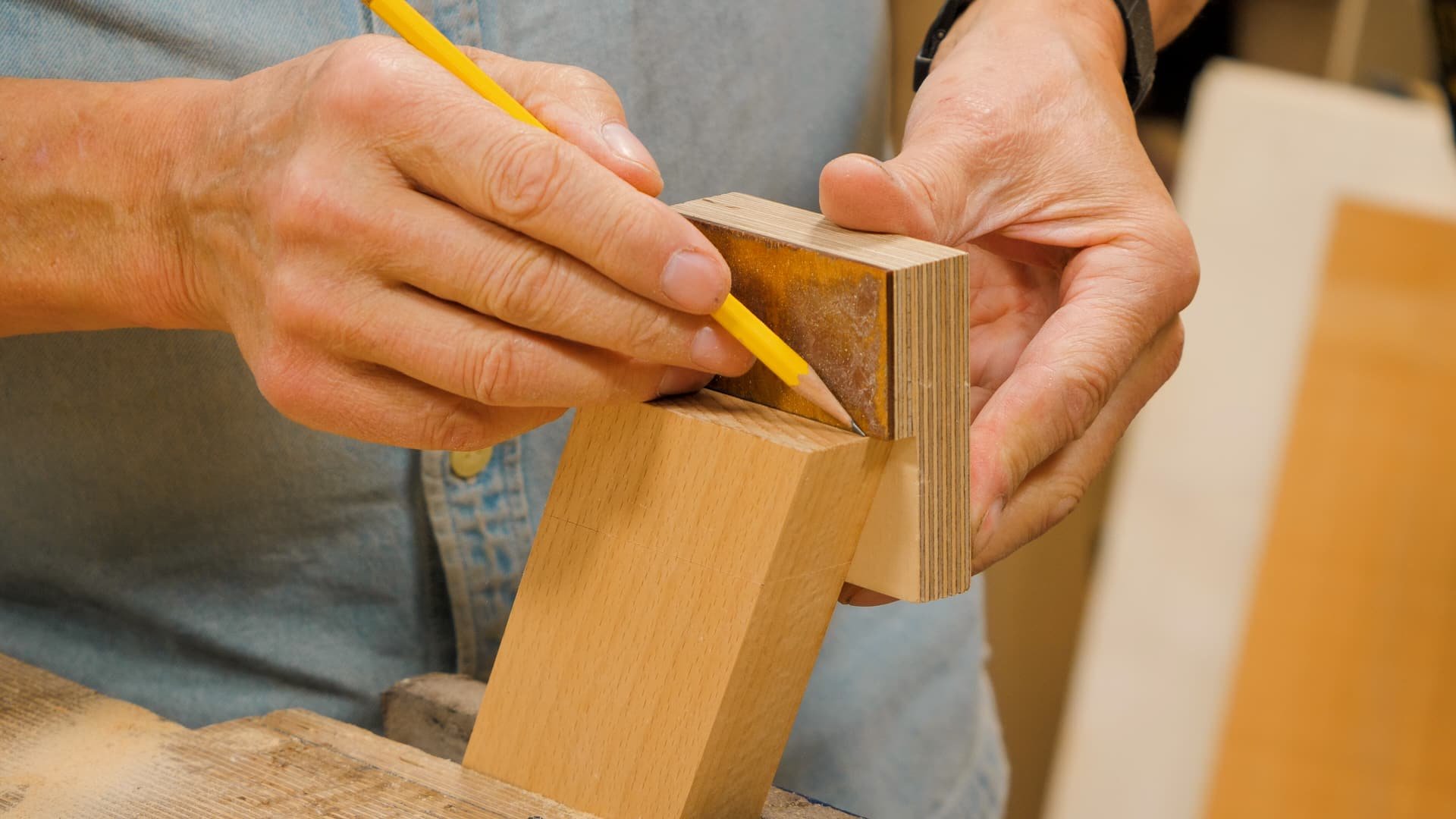Sellers Home Side Cupboard: Episode 4
Posted 9 November 2022
This is an episode in a paid series. Want to watch it? You just need to sign up as a paid member, and you can enjoy this video and many other videos we think you will love.
The undercarriage framework and legs carry the weight of the cabinet on four points, and we rely on well-proven traditional joinery that guarantees the full support we need to that end. The layout and splayed legs push for a non-tipability outcome by placing the outer extremes of the frame towards the furthest practical outer points of the cabinet. For the joinery we are using Paul’s mortise and tenoning system, but you can use traditional methods too. As you follow this video, you will understand how the cabinet has the intrinsic strength of the mortise and tenon joints and how to create them with the very best fit.


Paul, does using a narrow chisel to clean the mortise dull the chisel? Would it be advantageous to keep an older chisel handy, just for cleanout purposes?
If you just nudge and tease out the chips then, no, it doesn’t dull it. If you scrape the chisel across the bottom of the mortise, then yes. Some scraping always seems to happen at least a little. I don’t think it is worth having a separate chisel: Narrow chisels sharpen quickly. Quite often, I take shavings off of the bottom of the mortise with the narrow chisel to flatten the bottom. Only a portion of the mortise can be reached this way, but it is still useful, useful enough that I want a real chisel, not a “this is junk I don’t care about it” chisel. It really isn’t a big deal.
I often use my square “birdcage” awl for cleaning out the waste of a mortise. It’s worked well for me.
Everything you do cutting wise dulls a chisel. If you don’t want to use a chisel you could use a screw driver or a paint can opener or anything else that is small thin and sized to fit in the hole
One thing I sometimes wonder about is how often Paul sharpens his chisels and other tools. He seems to go a long time, or perhaps he does not show all the times he sharpens. On the other hand, the longer I do woodworking the more often I find I sharpen chisels (and planes and saws). This is partly because sharpening gets faster and easier with practice so I just routinely do it a lot For a while I used various things, such as paint can openers and old dull chisels, to leverage out waste from a mortise hole, as deanbecker mentions. But I no longer do. I just sharpen regularly and do not worry much about dulling a chisel. Actually, I am more concerned about breaking a chisel when leveraging out waste wood, though I have not done that so far!
I asked Paul and he said:
I don’t show every sharpening but the edges of my tools do stay crisp for a long period. In general you are right to sharpen more frequently.
Exactly. A chisel is made to be sharpened just like a plane or knife when it gets dull.
I think you are sharpening as you are supposed to when you feel the edge falter. In some woods it’s 2 minutes in others it’s 15.
I Think the thing we look for is when it’s not sharp enough.
The nature of the beech….am I missing one of these each tutorial….are the marking gauges no longer used for marking and severing fibres ?
I like the leg/support design; it seems to have a bit of Cubism &/or Bauhaus design elements. I like the design of all the Sellers Home pieces.
As always, excellent job at teaching, demonstrating & craftsmanship Paul. The entire WWMC team produce consistently great content.
Thank you all.
Thank you Derek!
I am working through this project I’ve gotten to the leg frame. In the video, Paul says that he’s cut the base rails to 28 1/2″. In the plans it says 28″. From making a quick cardboard mock up, 28″ looks too short,.